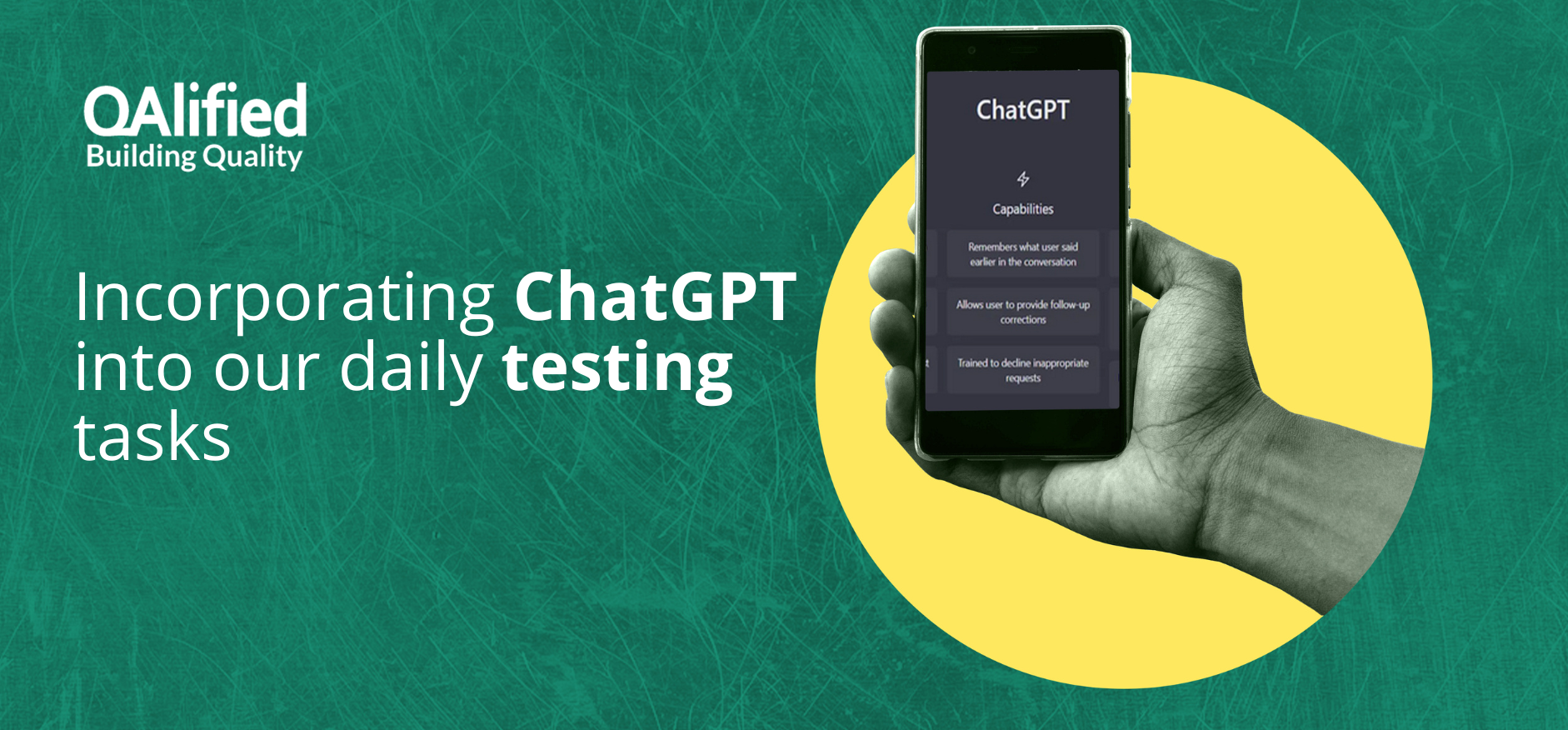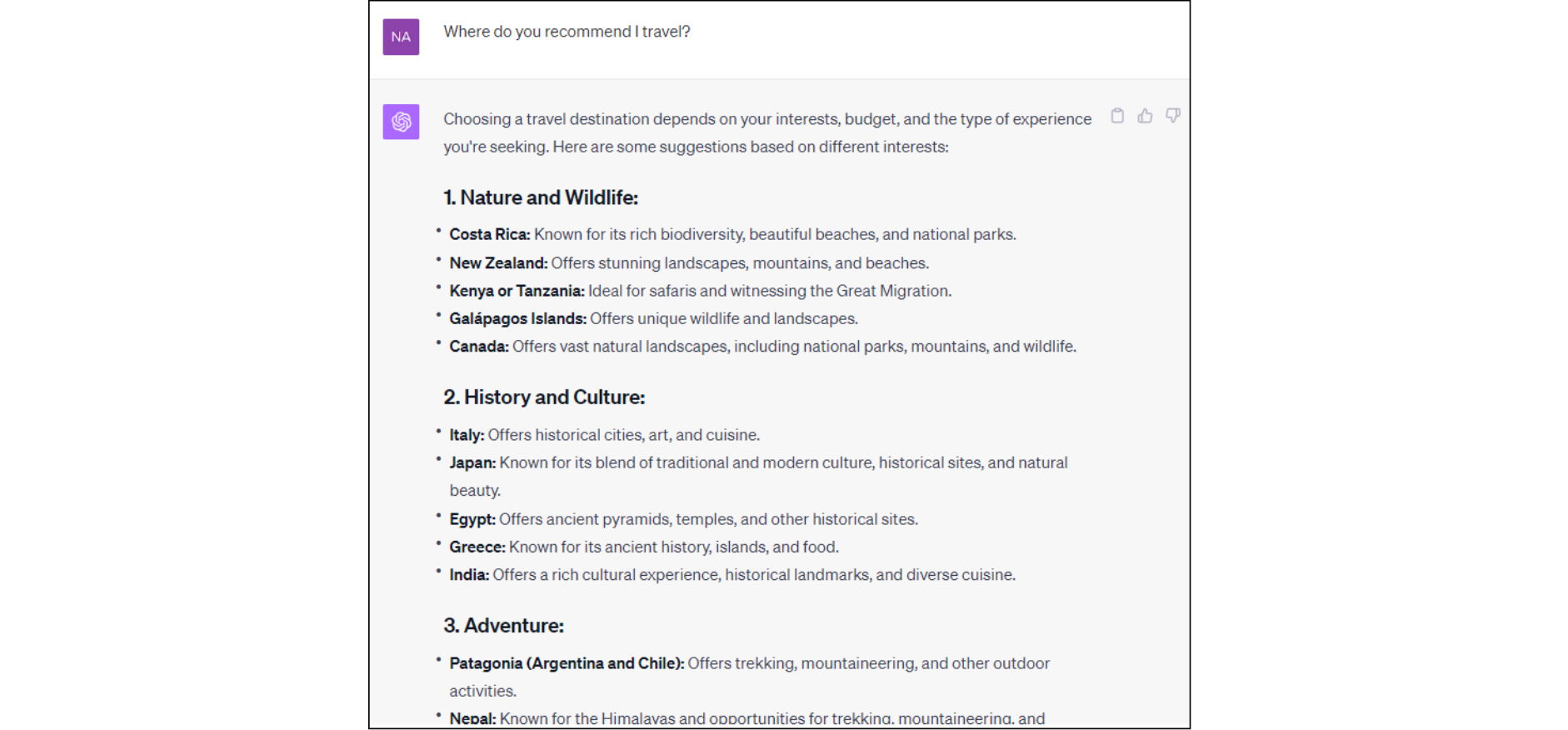In today's digital era, the breakneck speed at which Artificial Intelligence (AI) is advancing is transforming entire industries, redefining paradigms, and setting new standards for efficiency and accuracy.
From medicine to automation, and of course, in the field of software testing, AI is emerging as a disruptive force. Rather than fearing it or viewing it with concern, it is advisable to harness it and consider it for what it is: a working tool that allows us to enhance our performance.

Introduction
In the field of testing, the advancement of AI represents a double challenge: on the one hand, learning how to use tools such as ChatGPT to improve our efficiency and accuracy; and on the other, understanding and adapting to the new wave of AI-driven systems to ensure that they are tested properly. It is not only essential to leverage AI as a tool, but also to understand it as an integral part of the systems we are testing. In this context, the role of the tester becomes even more crucial, as we must not only ensure that systems perform as expected, but also navigate and adapt to this constantly evolving technology landscape.
For all the reasons mentioned above, we invite you to learn together about some more general aspects, as we have started here, and then continue with more specific posts.
What is ChatGPT?
ChatGPT is a pre-trained generative language model that uses AI to interact with users. This model can understand and respond to user messages in a chat format, enabling smooth and coherent interactions.
It is based on the GPT (Generative Pre-trained Transformer) architecture, which has been trained on vast amounts of text to achieve deep and versatile understanding of human language. Its ability to provide quick and creative responses to a wide range of questions has made it a highly popular tool in various fields, from customer service to education, and now, in the field of testing.
How to Use ChatGPT?
Using ChatGPT involves a series of steps:
1. Access the OpenAI website and register (https://chat.openai.com/). The platform offers a free version of ChatGPT, although there is also a paid version with more features.
2. Start a conversation by typing a prompt (question/instruction) into the text box. This prompt should be clear and specific to get a better response.
3. ChatGPT will provide a response, and a chat will be created where you can continue sending messages. You can send additional messages on the same topic or new topics, as well as clarify previous points.
4. You can start a new chat or review previous conversations. This functionality allows users to keep a record of their conversations and review them at any time.
It is important to note that ChatGPT has a knowledge cutoff until September 2021, which means it is not aware of events or developments after that date, although the model is periodically updated with new versions. Additionally, while it is a powerful tool, it is not infallible. It is crucial to verify the information generated from reliable sources.
How to Formulate Effective Prompts for ChatGPT?
A prompt is essentially an instruction or request provided to ChatGPT to obtain the desired response. The ability to formulate effective prompts is essential to maximize the utility of ChatGPT and has become a skill in itself, known as prompt engineering.
Here are some practical techniques for drafting more effective prompts:
Provide clear instructions: Instead of simply asking a question, you can give detailed instructions to the model on how to respond to your question. For example, instead of asking, “How can I train a linear regression model?” you could say, “Write Python code to train a linear regression model from scratch, including both the code and relevant explanations.”
Provide context: Providing context can be helpful, especially when seeking detailed information or when asking a question within a series of interactions. For example, instead of simply asking, “What is superposition?” you could ask, “In the context of quantum physics, what is superposition?”
Assign roles to the model: You can ask the model to assume a specific role and provide responses from that perspective. For example, you could say, “Imagine you are a senior application developer with expertise in databases, cloud computing, and iOS development. Design an app to track people’s steps.”
Provide examples: You can provide one example (a single prompt) or multiple examples (multiple prompts) before asking the model to give you the answer. This technique often results in more accurate and relevant responses from the model.
Request a Chain of Thoughts (CoT-Chain of Thoughts): When asking more complex questions that require reasoning, the model may provide incorrect results. However, if you ask the model to explain its reasoning step by step, it will produce more accurate results. Research has shown that CoT prompts can improve results in tasks requiring arithmetic, common sense, and symbolic reasoning.
Below are some examples of how well-designed prompts can be used with ChatGPT for everyday tasks:
- Prompt with little information and lack of specificity:

- Prompt generating context, providing clear instructions on what is expected of it: You can see how the response changes, generating much more useful and relevant information. After obtaining this, you could iterate towards the goal by asking further questions within the same chat until you get the desired final result.

Importance of ChatGPT in the Testing Area
The use of tools like ChatGPT offers several significant advantages in the testing area:
Test case design: ChatGPT facilitates the rapid and accurate generation of test cases from functional specifications. By providing clear instructions and conversing with Chat, testers can develop a variety of test scenarios, improving coverage and enabling early problem identification.
Analysis of functional requirements: The model can assist in analyzing and better understanding functional requirements, providing a clear and precise interpretation. This enhances understanding of requirements and helps testers design more effective test cases.
Generation of test data: Realistic test data can be generated, taking into account context and specified limitations. This is crucial for comprehensive test coverage and for discovering data-related errors.
Incident reporting: ChatGPT can assist in drafting incident reports, ensuring that all relevant information is included and that the report is clear and understandable. Testers can interact with Chat, providing the necessary information to report errors more clearly.
Integration with different testing tools: By developing the necessary integrations, the model can interact with various testing tools such as TestLink or Mantis, allowing for a smoother and more efficient workflow. This ability to interact with various testing tools can streamline the testing process and improve the overall efficiency of the testing team.
Support in various types of testing: Whether it’s security, performance, or usability testing, ChatGPT can provide relevant information and context-based support according to the needs of the case.
Support in test scripts: The use of ChatGPT can assist in the analysis and creation of test scripts, allowing testers to focus on more critical aspects of the testing process.
Concrete Examples of Tasks Where ChatGPT Can Help in Day-to-Day Work:
- Designing test cases and test data from a functional specification (created solely for this example)
- Incident reporting
- Support in security testing
Conclusion
In summary, ChatGPT offers several significant advantages in the world of software testing. From generating test scenarios and test data to automating repetitive tasks and enabling effective collaboration, ChatGPT has revolutionized the field of testing. With its ability to understand natural language and its continuous evolution, ChatGPT has the potential to transform and streamline testing practices in the future. By adopting this technology, organizations can improve the efficiency, quality, and reliability of their applications.
Based on the aforementioned, QAlified has been researching its application in the testing area for some time now. We have trained ourselves and shared experiences, enhancing its responsible use among all our collaborators. This is what has driven this initial approach, and we want to continue this path with future publications on the subject.
We say that we enhance its use responsibly because we must remember that, although ChatGPT is a powerful tool, it is essential to use it with caution, remembering that it is simply an assistant in our task and will never be able to do our job, as it lacks a global understanding of what we are testing. Therefore, whatever we use from here should be reviewed and analyzed in the context of our knowledge.
Furthermore, it is important to highlight the security challenges we face when using tools like ChatGPT. As testers, we must be extremely careful with the information we handle on these platforms. This is a risk we are well aware of, and we are working diligently to mitigate it.
We invite you to experiment with ChatGPT. The future of testing is here, and it is exciting!





